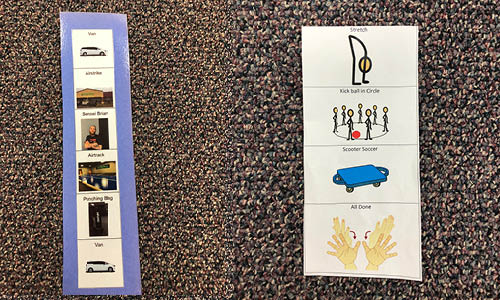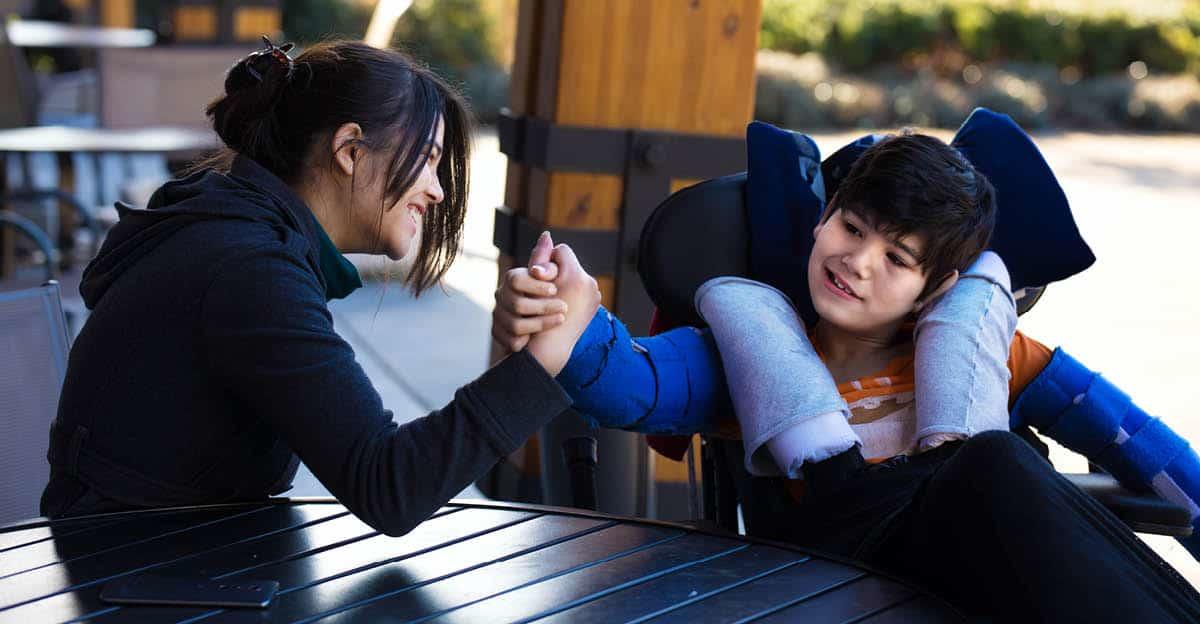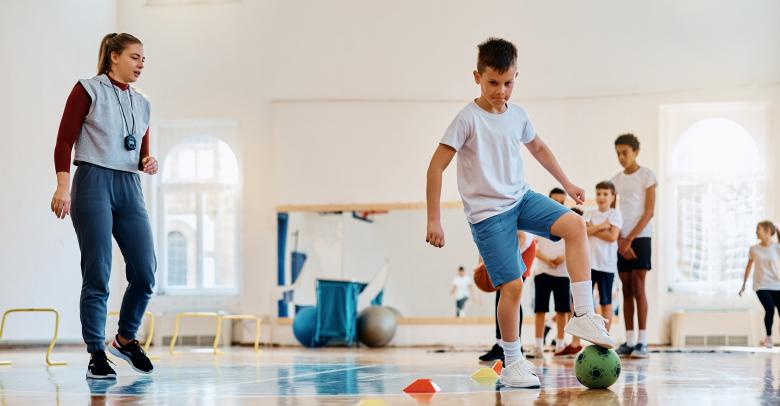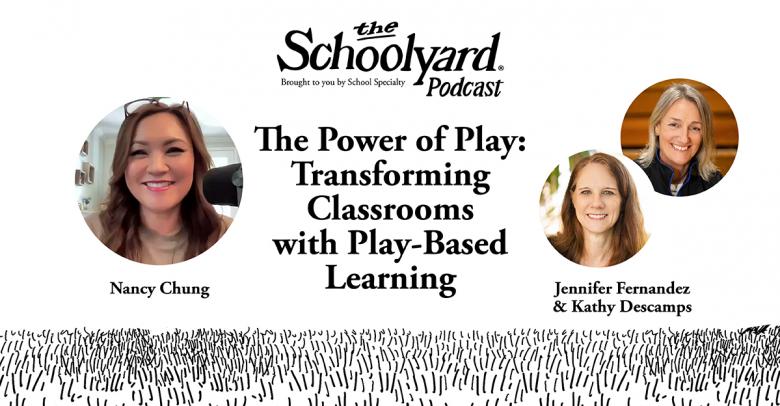Structure is by far the most important planning and implementation tool an Adapted Physical Educator possesses. I would like to share with you a few ideas for how to plan, produce and practice a class structure that supports students of varying intellectual, communicative and gross motor levels. Let me show you that it is the “how” not the “what” that will foster success for your students.
Implementing a Structured Class Routine: 4 Steps
Implementing a structured class routine that is visually supported will provide your students (and support staff) with:
- beginning, middle and end timelines
- clear and consistent guidelines for activity
- opportunities for independence at every level
Step 1: Plan Beginning and Ending of Class Time
The first step, is to plan what your beginning and end of class will look like. My students always “checked their schedules” upon entering the activity space and then performed the days warm up. For some students who needed even more structure, the warm-up was always the same: Run 3 laps.
I ended class with a “choice” where students completed 3 minutes of a preferred physical activity by themselves or with a partner (staff or student). By remaining consistent with my beginning and end, the students and staff were not left to question what was going to happen first, or what would happen when they were finished.
Step 2: Plan Middle/Activity Class Time
The second step, is to plan the middle portion of the class. What activities will the students be completing that are sport or subject specific? I chose to plan no more than 6 activities for my “middle” portion. This gave me the ability to create visual schedules that fit easily on one page or one picture strip.

Example: Icon and Real Word Picture Schedule
You can plan these activities in a progressive manner, or at stations that can be worked through individually. Just make sure that you are clear about that expectation. Once you’ve planned the activities your students will complete, you are now in the production stage. At this point, it is important to call upon experts in communication and your students classroom teachers to determine the best format for their schedules. If a student is an independent reader, or able to read with picture supports, a written or typed schedule is sufficient and simplistic.
Some students may need to match a small icon picture to a larger icon, or match real world pictures. I almost always use real world pictures as they are the most realistic and leave little room for confusion. There are samples of all these types of schedules pictured below. Another important piece of the production process is to give directions for staff. I choose to add these “staff specific” directions to the large pictures that my students match their icons to. This way, there is no confusion about what is expected of each activity, but I’m not overwhelming the students with too many words.
Step 3: Make it Happen
Once you’ve planned the lesson and produced the visually supported schedules, the final step is to put the lesson into practice. The beauty of using this system, is that the class can essentially run itself. Giving you the opportunity to provide individual attention to students gross motor skills.
You will find that the first few days/weeks of running this system, students and staff may have a lot of questions about procedure or schedules. Once they get the routine down, you will be able to use your time providing the physical support necessary while leaving the housekeeping behind.
Step 4: Remain Patient – Keep Going
As time progresses, you may realize that certain students can function on a less intense schedule (written or typed) or you may realize a student requires a more supportive schedule in this setting. The initial time it takes to plan and produce may seem overwhelming at first, but just as the students will adjust and become comfortable, you will as well. Don’t forget to laminate and save everything you can.
More PE Class Tools & Advice from Teachers of the Year
If you’re looking for more great ways to interact with students, plan engaging activities, and make this the best year yet, check out the other blog posts from SHAPE America Teachers of the Year.
Read More: SHAPE America Teacher of the Year Posts
Look for the Teacher Approved icon to shop for products recommended by award-winning and nationally recognized physical education teachers. The physical education instructor’s opinions are solely their own and do not officially represent the views of SHAPE America.






Leave a Reply